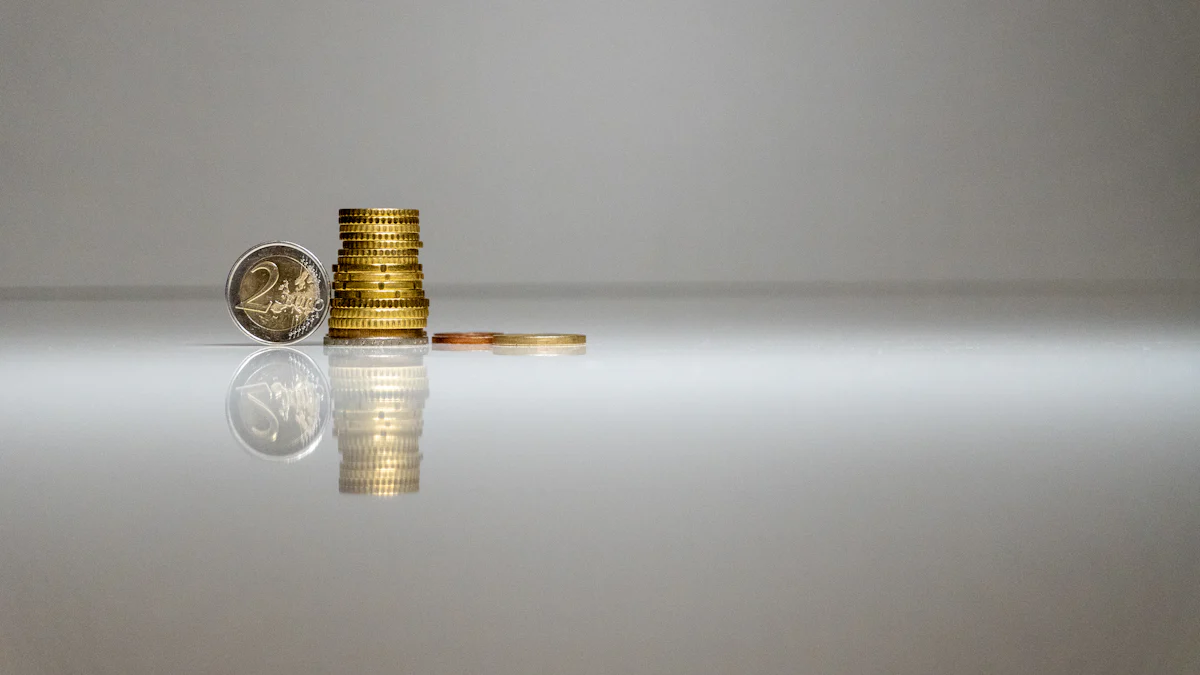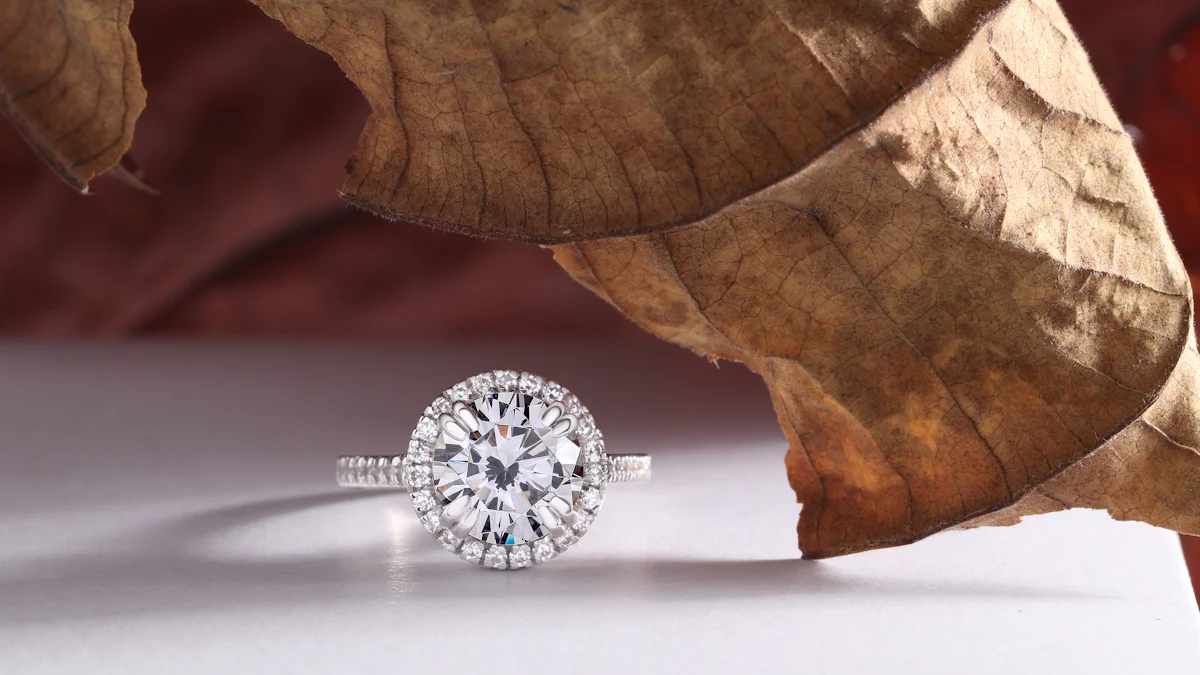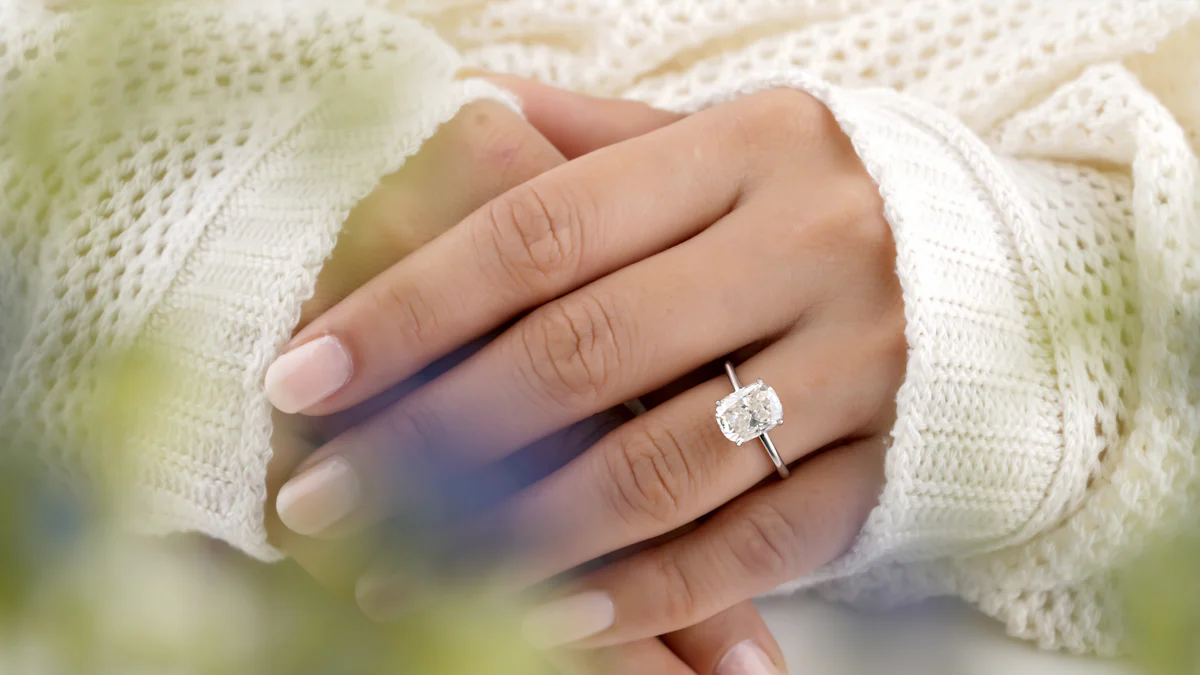How Much Does 1 Carat Diamond Cost Tips for Budgeting

A 1-carat diamond can range in price from $2,000 to over $25,000, so it's important to know how much does 1 carat diamond cost. This wide variation depends on factors like cut quality, clarity, color, and carat weight. For example, diamonds with higher clarity grades or rare colors often come with a higher cost. Shape and certification also play a role in determining value. To make a smart purchase, you need to set a clear budget and understand what influences the price. With the right approach, you can find a diamond that balances beauty and affordability.
Understanding How Much Does 1 Carat Diamond Cost

When figuring out how much does 1 carat diamond cost, you need to dive into the details. The price of diamonds doesn’t follow a simple formula. Instead, it depends on several factors, with the 4Cs playing the most significant role. Let’s break it down so you can make sense of what influences the final price of their diamond.
The Role of the 4Cs in Pricing
Cut: How it impacts brilliance and value
The cut of a diamond determines how well it reflects light, directly affecting its sparkle and beauty. A well-cut diamond looks brilliant and lively, while a poorly cut one appears dull. You’ll notice that diamonds with excellent or ideal cuts often come with higher price tags. This is because the craftsmanship involved in achieving a perfect cut enhances the diamond’s overall appeal and value.
Clarity: The effect of inclusions and imperfections
Clarity refers to the presence of tiny imperfections, known as inclusions, inside the diamond. Fewer inclusions mean a clearer diamond, which usually costs more. However, many inclusions are microscopic and don’t impact the diamond’s appearance to the naked eye. Choosing a diamond with slightly lower clarity can help you save money without sacrificing beauty.
Color: Differences between colorless and near-colorless diamonds
Diamonds are graded on a color scale from D (colorless) to Z (light yellow or brown). Colorless diamonds are rare and command higher prices. Near-colorless diamonds, graded G to J, offer a more budget-friendly option while still appearing white to most people. If you’re looking to balance quality and cost, near-colorless diamonds are worth considering.
Carat Weight: Why size significantly affects cost
Carat weight measures a diamond’s size, and it’s one of the biggest factors in determining the price of diamonds. Larger diamonds are rarer, so their cost increases exponentially with size. For instance, a 1-carat diamond costs significantly more than a 0.9-carat diamond, even if they look almost identical. Opting for a slightly smaller carat weight can help you save without compromising on appearance.
Additional Factors That Influence Price
Certification: Importance of GIA or AGS grading
A diamond’s certification acts as its report card. Reputable grading labs like GIA (Gemological Institute of America) or AGS (American Gem Society) provide detailed evaluations of a diamond’s quality. Certified diamonds often cost more, but they give you confidence in what you’re buying. Always check for certification to ensure you’re paying a fair price.
Shape: How different diamond shapes affect pricing
The shape of a diamond also impacts its cost. Round diamonds are the most popular and expensive due to their brilliance and demand. Other shapes, like oval, pear, or cushion, can offer better value for your money. If you’re open to exploring unique shapes, you might find a stunning diamond at a lower price.
Market Trends: Seasonal and demand-based price fluctuations
Diamond prices fluctuate based on market trends. During peak seasons, like the holidays or Valentine’s Day, demand increases, and so do prices. Shopping during off-peak times can help you snag a better deal. Staying informed about market trends ensures you make a purchase at the right time.
“A diamond’s price is determined primarily by the 4Cs of the diamond.” – Gemologists
Understanding these factors gives you the knowledge to navigate the diamond market confidently. By focusing on what matters most to you, you can find a diamond that fits both your preferences and your budget.
Budgeting Tips for Buying a Diamond

When it comes to buying a diamond, sticking to a well-thought-out plan can make all the difference. These budgeting tips will help you make informed decisions and get the most value for your diamond buying budget.
Determine the Budget
Before you start shopping, take a moment to determine the budget that works for you. This step ensures you stay focused and avoid overspending.
Set a spending limit before starting your search
Decide how much you’re comfortable spending on the diamond. Base this amount on your savings or financial situation. A clear spending limit keeps you from feeling overwhelmed by options outside your price range. It also helps you narrow down choices quickly.
Allocate funds for both the diamond and the setting
Don’t forget to include the cost of the ring setting in your engagement ring diamond budget. The setting can significantly impact the overall price. For example, a simple band costs less than an intricate design with additional stones. By planning for both, you avoid surprises and ensure your budget covers everything.
Consider Near-Colorless Diamonds
Choosing near-colorless diamonds is one of the smartest ways to save money without sacrificing beauty.
Save money by choosing diamonds in the G-H color range
Diamonds in the G-H color range look almost identical to higher-grade colorless diamonds but cost much less. Most people can’t tell the difference between a G-H diamond and a D-F diamond with the naked eye. This small compromise can stretch your diamond buying budget further while still giving you a stunning stone.
Opt for Slightly Smaller Carat Weights
Carat weight plays a big role in diamond pricing, but going slightly smaller can help you maximize your budget.
How a 0.9-carat diamond can offer similar appeal at a lower cost
A diamond just under 1 carat, such as 0.9 carats, looks nearly identical to a full carat diamond. However, the price difference can be significant. Jewelers often charge a premium for diamonds that hit the full-carat mark. By choosing a slightly smaller stone, you can achieve the same visual impact while saving money. This strategy is perfect for maximizing your budget without compromising on appearance.
By following these budgeting tips, you can find a beautiful diamond that fits your financial goals. Whether you’re buying diamond engagement rings or looking for a budget engagement ring, these strategies ensure you get the best value for your money.
Explore Lab-Grown Diamonds
Lab-grown diamonds have become a game-changer for budget-conscious buyers. These diamonds are created in controlled environments using advanced technology, making them chemically, physically, and optically identical to natural diamonds. If you're looking for a stunning diamond without breaking the bank, lab-grown options might be the perfect solution.
Benefits of lab-grown diamonds for budget-conscious buyers
-
Significant Cost Savings
Lab-grown diamonds cost 30-50% less than natural diamonds. For instance, a 1-carat princess-cut natural diamond might cost around $2,500, while a lab-grown equivalent of the same quality could be priced at just $500. This price difference allows you to get a larger or higher-quality diamond within your budget. -
Identical Properties to Natural Diamonds
Lab-grown diamonds share the same chemical, physical, and optical properties as natural diamonds. They sparkle just as brilliantly and are visually indistinguishable. You won't have to compromise on beauty or quality when choosing a lab-grown diamond. -
Flexibility in Budget
With lab-grown diamonds, you can explore more options. Whether you want a flawless diamond or a larger carat size, these diamonds offer flexibility that natural diamonds often can't match. This makes them an ideal choice for budget engagement rings or other special occasions. -
Eco-Friendly and Ethical Choice
Many buyers appreciate that lab-grown diamonds are a more sustainable and ethical option. They avoid the environmental and social concerns associated with traditional diamond mining. By choosing lab-grown, you can feel good about your purchase while staying within your financial limits.
Lab-grown diamonds provide an excellent alternative for those buying a diamond on a budget. They combine affordability, quality, and ethical considerations, making them a smart choice for modern buyers. If you're open to exploring non-traditional options, lab-grown diamonds can help you achieve the perfect balance of beauty and value.
Cost-Saving Strategies for Your Diamond Buying Budget
When you're buying a diamond, finding ways to save without sacrificing quality is key. These strategies will help you stretch your diamond buying budget and ensure you get the best value for your money.
Choose a Simple Setting
How minimalist designs can reduce overall costs
The ring setting plays a big role in the overall cost of your diamond purchase. Opting for a simple, minimalist design can significantly lower expenses. Intricate settings with additional stones or elaborate details often come with higher price tags due to the extra craftsmanship involved. A classic solitaire setting, for example, not only highlights the beauty of the diamond but also keeps costs manageable.
Minimalist designs are timeless and versatile, making them a smart choice for those who want elegance without overspending. By focusing on simplicity, you can allocate more of your budget toward the diamond itself, ensuring you get the best possible stone within your price range.
Buy Online from Reputable Retailers
Advantages of online shopping for better deals
Shopping for diamonds online can be a game-changer for your diamond buying budget. Reputable online retailers often offer lower prices compared to brick-and-mortar stores. This is because they have fewer overhead costs, such as rent and utilities, allowing them to pass the savings on to you.
Online platforms also provide access to a wider selection of diamonds, making it easier to compare options and find the perfect stone. Many retailers include detailed certifications and high-resolution images, so you can make an informed decision from the comfort of your home. Plus, online stores frequently run promotions or discounts, giving you even more opportunities to save.
When shopping online, stick to well-known retailers with strong customer reviews and return policies. This ensures you get a high-quality diamond while enjoying the convenience and cost savings of online shopping.
Select Alternative Metals for the Band
Affordable options like white gold or sterling silver
The metal you choose for your ring band can have a significant impact on the overall cost. Platinum, while durable and luxurious, is one of the most expensive options. Choosing alternative metals like 14K or 18K white gold can save you hundreds of dollars without compromising on style or durability. For instance, a 14K white gold setting might cost around $690, while the same design in platinum could be priced at $1,020.
Sterling silver is another budget-friendly option, though it may require more maintenance over time. These alternatives allow you to achieve a stunning look while keeping your diamond buying budget intact. By selecting a less expensive metal, you can focus more on the diamond itself, ensuring you get the best value for your money.
“A beautiful ring doesn’t have to break the bank. Smart choices in design and materials can make all the difference.”
These cost-saving strategies are practical and effective for anyone navigating the diamond market. Whether you’re exploring minimalist settings, shopping online, or choosing alternative metals, these tips ensure you maximize your diamond buying budget while still getting a stunning piece.
Time Your Purchase
Best times of the year to find discounts on diamonds
Timing plays a crucial role when you're shopping for a diamond. Knowing when to buy can help you save a significant amount of money. Diamonds, like many other luxury items, experience price fluctuations throughout the year. By planning your purchase strategically, you can take advantage of seasonal discounts and promotions.
Here are some of the best times to shop for diamonds:
-
Post-Holiday Sales
Retailers often offer discounts after major holidays like Christmas and Valentine’s Day. These periods see high demand for diamond jewelry, and once the rush is over, stores may lower prices to clear out inventory. Shopping during these post-holiday sales can help you snag a great deal. -
Black Friday and Cyber Monday
These shopping events are famous for their massive discounts across various product categories, including diamonds. Many online and brick-and-mortar retailers run special promotions during this time. If you’re comfortable shopping online, you might find even better deals from reputable retailers. -
Summer Months
Summer tends to be a slower season for diamond sales. With fewer people shopping for engagement rings or luxury items, retailers may offer discounts to boost sales. This makes summer an excellent time to explore options and negotiate prices. -
End of the Fiscal Year
Many jewelers aim to meet sales targets before the fiscal year ends. This often results in markdowns and promotions to encourage purchases. Keep an eye out for these opportunities, especially in March or September, depending on the retailer's fiscal calendar.
“Diamond prices fluctuate based on market trends and seasonal demand.”
Additionally, understanding how the diamond market operates can give you an edge. For instance, De Beers, one of the largest diamond suppliers, holds exclusive events called "sights" ten times a year. During these events, select companies purchase diamonds directly from De Beers. These transactions influence diamond prices globally. By staying informed about such market dynamics, you can better predict when prices might drop.
Timing your purchase wisely ensures you get the best value for your money. Whether you’re shopping during post-holiday sales or taking advantage of summer discounts, planning ahead can make a big difference.
A 1-carat diamond’s cost depends on the 4Cs—cut, clarity, color, and carat weight—along with factors like shape and certification. By understanding these elements, you can make smarter choices and prioritize what matters most to you. Setting a clear budget helps you stay focused and avoid overspending. Cost-saving strategies, such as choosing near-colorless diamonds, lab-grown options, or slightly smaller carat weights, can help you find the best diamond possible within your price range. With thoughtful planning, you’ll make a purchase that balances beauty and value perfectly.
FAQ
How can I save money when buying a diamond?
Saving money on a diamond requires balancing quality and value. Focus on what matters most to you. For example, choosing a near-colorless diamond in the G-H range or opting for a slightly smaller carat weight can significantly reduce costs without sacrificing beauty. Lab-grown diamonds also offer a budget-friendly alternative while maintaining the same brilliance as natural ones.
What determines diamond cost?
A diamond’s price depends on several factors, with the 4Cs—cut, clarity, color, and carat weight—playing the biggest role. The cut affects brilliance, clarity measures imperfections, color determines rarity, and carat weight impacts size. Other elements, like shape, certification, and market trends, also influence the final cost.
How do I create a diamond buying budget?
Start by assessing your financial situation. Decide how much you’re comfortable spending and stick to that limit. Remember to include the cost of the setting in your budget. By planning ahead, you can focus on finding a diamond that fits both your style and your wallet.
How can I save money when buying a one-carat diamond?
Understanding the 4Cs is key. Decide which qualities matter most to you. For instance, you might prioritize cut over clarity or choose a near-colorless diamond instead of a completely colorless one. These small compromises can help you save while still getting a stunning diamond.
Are lab-grown diamonds a good option?
Yes, lab-grown diamonds are an excellent choice for budget-conscious buyers. They cost 30-50% less than natural diamonds and have the same physical, chemical, and optical properties. Plus, they’re an eco-friendly and ethical alternative, making them a smart option for modern buyers.
What’s the best time to buy a diamond?
Timing your purchase can make a big difference. Post-holiday sales, Black Friday, and summer months often offer discounts. Shopping during these periods can help you find a great deal. Keep an eye on promotions and plan your purchase strategically.
Does the diamond shape affect the price?
Yes, the shape of a diamond impacts its cost. Round diamonds are the most expensive due to their popularity and brilliance. Other shapes, like oval, pear, or cushion, often provide better value. Exploring unique shapes can help you save money while still getting a beautiful diamond.
Should I buy a certified diamond?
Always choose a certified diamond. Certification from reputable labs like GIA or AGS ensures you’re getting what you pay for. It provides a detailed evaluation of the diamond’s quality, giving you confidence in your purchase.
Can I save money by buying a diamond online?
Yes, buying a diamond online can save you money. Online retailers often have lower overhead costs, allowing them to offer competitive prices. They also provide a wider selection, making it easier to compare options. Just make sure to buy from reputable retailers with strong reviews and return policies.
Is it worth compromising on clarity or color?
Compromising on clarity or color can be a smart way to save money. Many inclusions in lower-clarity diamonds are invisible to the naked eye. Similarly, near-colorless diamonds in the G-H range look almost identical to colorless ones but cost much less. These compromises let you maximize your budget without sacrificing beauty.
See Also
Exploring Essential Elements That Influence Diamond Ring Costs
What’s the Price of a 3 Carat Lab Diamond?
Comparative Analysis of Prices for All Around Diamond Rings

